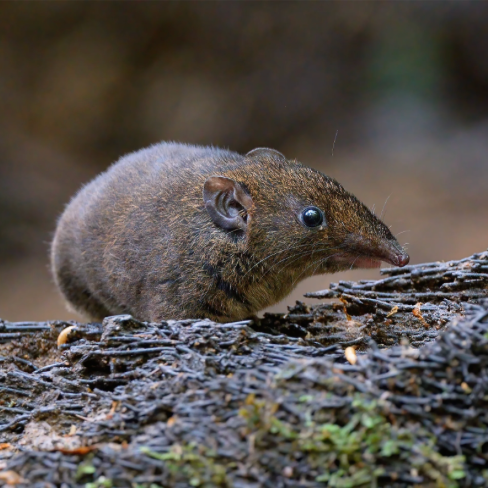Vampire hedgehogs, pirate spiders and fishy fungi - the strangest new species of 2024
- dhruvi kavedi
- Jan 27
- 3 min read
We all usually hear about extinction, what we don't hear about is discoveries. From the pacific ocean to the mountains of Vietnam Thousands of new species have been discovered by scientists this year – here are some of the weirdest.
Fishy fungi
One of the new species – Russula lapponica – was found amongst the mixed birch, spruce, pine, hazel, elm and aspen woods of Lapland in Sweden, Norway and Estonia. Another called Russula neopascua was found to live alongside the alpine willow of the high Rockies in Colorado and Montana. Russula olympiana resides mostly in coniferous forests of the Pacific Northwest and British Columbia.

2. A Vampire Hedgehog
This hedgehog has soft fur instead of spines, however the sharp thing about this animal is that they have long fang-like teeth, which lead to their name being Hylomys macarong.as Ma cà rồng means "vampire" in Vietnamese.They are nocturnal and ring 14 cm long.The reason behind the presence of their sharp teeth is still a mystery under investigation.

3.Cao bang Crocodile newt
This amphibian is a rather shy one. It was found hiding under a rock in a slow- flowing stream in northeastern Vietnam.
Tylototriton koliaensis, it takes this name after where it was found,Kolia Organic farm in the Kolia Mountain Pass in Vietnam's Cao Bang province, close to the border with China.The amphibian has a series of bony ridges and knob-like warts running down its back, much like a crocodile. But that is where the similarities end – these diminutive amphibians grow to just 7.3cm (2.8in) in the larger females. They are almost entirely black in colour, except for the tips of their toes and fingers, which are bright orange. They also have small orange patches on their palms and a stripe of orange on the underside of their tails.

4.Pirate spiders
Two new species of predatory spiders, Ero lizae and Ero natashae, were discovered in the cloud forests of St Helena, a British Overseas Territory. These spiders violently seize the webs of other spiders and kill the occupants. Identified through genetic analysis of specimens in museums in London and Belgium, the 4mm-long Ero lizae has spike-like protuberances on its body, adding to its menacing look, though their purpose is unknown..

5.Blob headed fish and Semi aquatic mouse
During a 38-day expedition in Peru’s Alto Mayo region, researchers identified 27 species new to science, including a rare amphibious mouse and an unusual blob-headed fish. The fish, a type of bristlemouth armored catfish, was discovered in mountain streams and described as a “shocking discovery” due to its mysterious head shape. While familiar to the Indigenous Awajun people, it is new to science. The semi-aquatic mouse, found in a small swamp forest, is uniquely adapted to its waterlogged environment with webbed toes that aid in its wet habitat.


Take back -
While the alarming rate of species extinction remains an urgent and critical issue, it's equally important to occasionally shift our focus and celebrate the positive. The discovery of new species by scientists offers a glimmer of hope and reminds us of the incredible diversity our planet still holds. Appreciating these discoveries can inspire renewed efforts to protect and preserve the natural world.
Biodiversity is also extremely important. The key takeaway is that while the discovery of new species is exciting, it also highlights the urgent threat of human-driven habitat destruction. Many species are found on the verge of extinction, emphasizing the need for immediate global conservation efforts. The biodiversity crisis impacts us all, and delaying action risks irreversible consequences.
Bibliography -




Comments